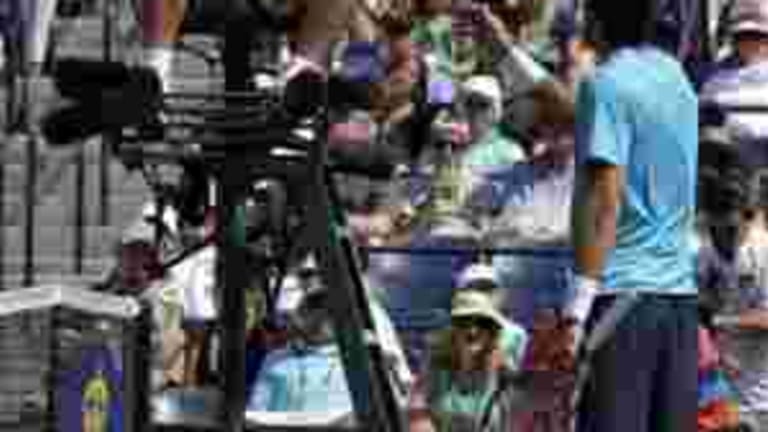Steve,
Be honest, which of the top men’s players, Federer, Nadal, or Djokovic, has the worst fans?—William
By "worst," I’m going to assume you mean the most passionate and defensive. If that’s the criteria, I honestly think it’s a three-way tie (whether that's a tie for first or last, I’m not sure). Like just about everything else in tennis, your own answer to this question will likely correspond to which player you prefer. It’s always the other guys’ fans who are the dangerous lunatics, not yours.
But there are differences in emphasis among the groups. If I can generalize for a minute, I’d say diehard Federer fans tend to think of him as the man who Plays the Game the Way It Was Meant to Be Played. He does it with flair and without much obvious effort, with a one-handed backhand and an all-court style. He doesn’t talk about injuries all the time. He doesn’t take too long between points. He doesn’t look at his player’s box for help. He doesn’t withdraw from tournaments. He is tennis to many—if he’s not winning, there must be something wrong with the sport; the courts must be too slow, the game must be too brutal.
Nadal fans seem to be more protective of him as a person. Is he smiling? Is he happy? Is he worried? Is he in pain? These were the things that the people who waited (hours) to watch him practice in Indian Wells were asking each other. From his knee problems, to his facial expressions, to the fears and doubts he expresses, Nadal’s vulnerability is closer to the surface than Federer’s.
As for Djokovic, he obviously has a strong Serbian following, and his fans in general are as passionate and protective as Nadal’s and Federer’s, but I’m not sure what specifically about his game or personality or struggle draws them to him. Not that I can’t see what’s likable about Djokovic. He’s the most extroverted and entertaining of the three, he’s a good loser, he shows what he’s feeling, and he’s a tremendous athlete to watch. I’m sure some Novak fans can tell us more about why he’s their guy.
We often say how lucky we are to have the players at the top that we do. That goes beyond their skills and sportsmanship and includes their ability to inspire such loyal fan bases. They may be prickly and irrational, but their involvement raises the stakes around the ATP's biggest matches. The sport would miss that if they weren't there.
